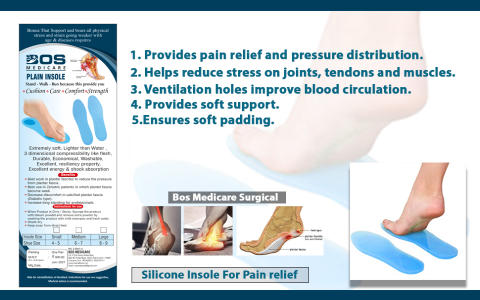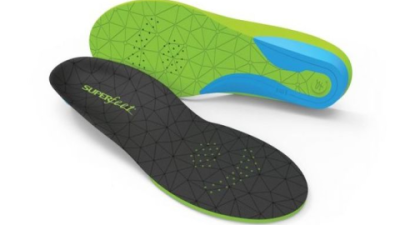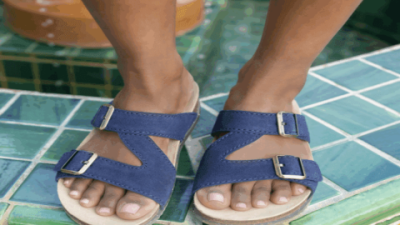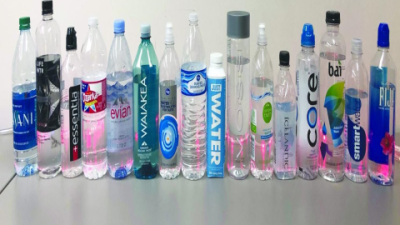Foot pain is a common complaint that affects millions worldwide, impacting daily activities and overall quality of life. One of the most effective solutions gaining popularity is the use of silicone arch support. These small yet powerful inserts offer a blend of comfort, stability, and pain relief that can transform how your feet feel throughout the day. In this article, we’ll explore why silicone arch supports are a game changer, how they work, and practical advice to help you choose the right one. Along the way, we’ll share real-life cases and answer frequently asked questions to ensure you have a comprehensive understanding.
What Is Silicone Arch Support?
Silicone arch support refers to soft, flexible inserts made from medical-grade silicone designed to fit inside your shoes and support the arch of your foot. Unlike rigid orthotics, silicone supports provide cushioning while maintaining flexibility, allowing natural foot movement. They help distribute pressure evenly across your foot, reduce strain on the arch, and improve alignment.
- Material: Medical-grade silicone, known for durability and skin-friendliness.
- Design: Contoured shape to fit the arch area snugly.
- Function: Cushioning, shock absorption, and support.
Why Silicone Arch Support Offers Ultimate Comfort & Pain Relief
Foot pain can stem from various causes — plantar fasciitis, flat feet, high arches, or simply prolonged standing. Silicone arch supports address these issues by:
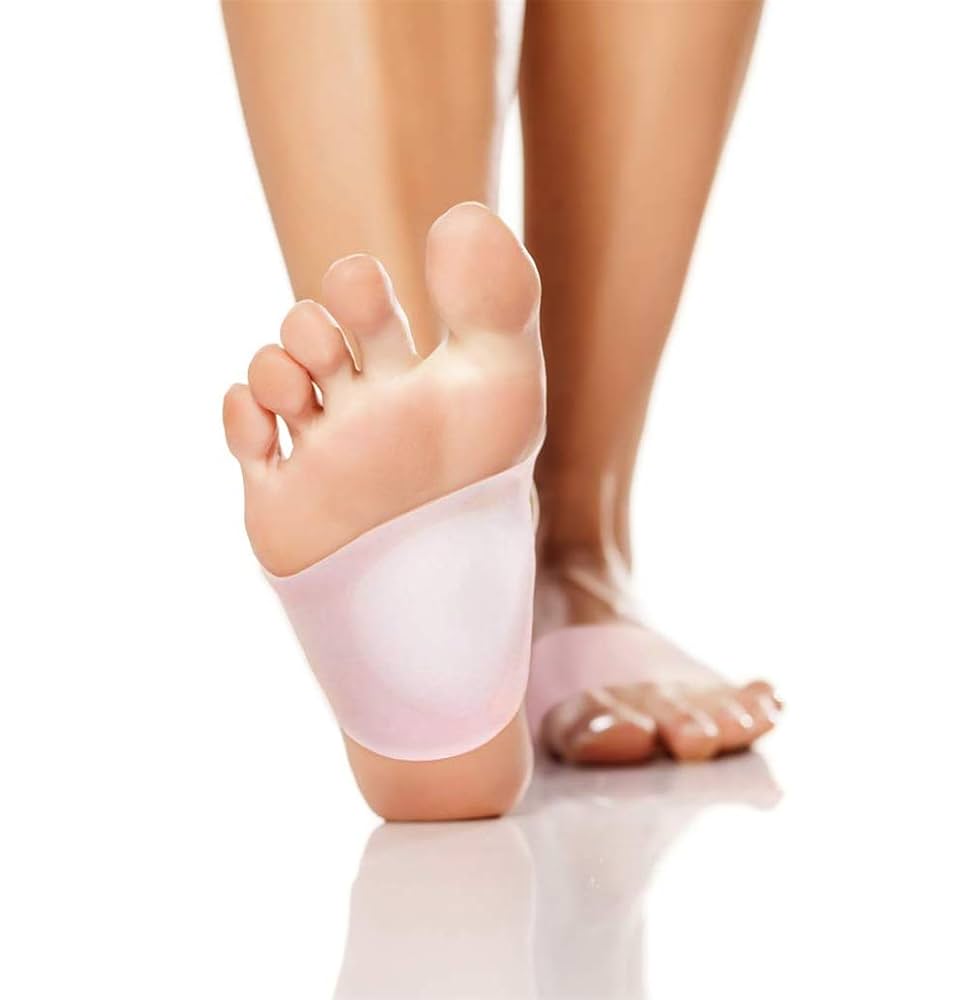
- Reducing Pressure: They absorb impact forces when walking or running, protecting sensitive tissues.
- Supporting Arch Structure: Proper arch support prevents overpronation or supination, reducing muscle fatigue.
- Enhancing Stability: By improving foot alignment, they help maintain balance and reduce joint strain.
- Increasing Comfort: The soft silicone material feels gentle against the skin, preventing irritation.
Compared to foam or gel inserts, silicone offers superior longevity and maintains its shape under pressure, ensuring consistent support.
Who Can Benefit from Silicone Arch Supports?
These supports are versatile and can help a wide range of people, including:
- Individuals with flat feet or fallen arches who need extra support to prevent pain.
- People suffering from plantar fasciitis, a common cause of heel and arch pain.
- Athletes and runners looking to reduce foot fatigue and injury risk.
- Those who stand for long hours, such as nurses, teachers, or retail workers.
- Elderly individuals seeking improved foot comfort and balance.
How to Choose the Right Silicone Arch Support
Choosing the right arch support is key to maximizing benefits. Consider the following factors:
| Factor | What to Look For | Why It Matters |
|---|---|---|
| Arch Height | Low, medium, or high arch supports | Match your foot’s arch shape for optimal support |
| Size & Fit | Choose size based on shoe size and foot width | Ensures comfort and prevents slipping |
| Thickness | Thicker for more cushioning, thinner for tight shoes | Balances comfort with shoe fit |
| Material Quality | Medical-grade silicone preferred | Durability and skin safety |
| Design Features | Non-slip backing, breathable surface | Prevents movement and keeps feet dry |
Real-Life Case: How Silicone Arch Support Changed Anna’s Life
Anna, a 38-year-old teacher, struggled with chronic foot pain after long days standing in the classroom. She tried various insoles but found them either too hard or quickly worn out. After switching to a silicone arch support, she noticed immediate relief. The cushioning reduced her heel pain, and the arch support helped her stand longer without discomfort. Over three months, Anna’s foot fatigue diminished significantly, allowing her to focus on teaching rather than pain.
Her story highlights how the right silicone arch support can improve daily life by addressing pain at its source.
Tips for Using Silicone Arch Supports Effectively
- Start Gradually: Wear the supports for a few hours daily, increasing time as your feet adjust.
- Use with Proper Footwear: Support works best in well-fitting shoes with enough room for the insert.
- Maintain Hygiene: Clean the silicone inserts regularly with mild soap and water to avoid odor and bacteria buildup.
- Replace When Worn: Although durable, silicone supports should be replaced every 6- months depending on use.
- Consult Professionals: If pain persists, see a podiatrist for personalized advice.
Frequently Asked Questions (FAQ)
Q1: Can silicone arch supports help with plantar fasciitis?
Yes, silicone arch supports can alleviate plantar fasciitis pain by cushioning the heel and supporting the arch, reducing strain on the plantar fascia ligament.
Q2: Are silicone arch supports suitable for all shoe types?
They work best in closed shoes with removable insoles, such as sneakers, work shoes, and casual footwear. They may not fit well in tight or open-toed shoes.
Q3: How do I know if I have flat feet or high arches?
A simple wet test can help: wet your foot and step on a piece of paper. If you see almost the entire footprint, you likely have flat feet. A narrow footprint with a large gap in the middle indicates high arches.
Q4: Can I wear silicone arch supports all day?
Yes, but it’s best to start wearing them for a few hours and gradually increase to full-day use to allow your feet to adapt.
Q5: How do silicone arch supports compare to custom orthotics?
Custom orthotics are tailored to your feet and may provide more precise correction but are often more expensive. Silicone arch supports offer a cost-effective, comfortable alternative for mild to moderate support needs.
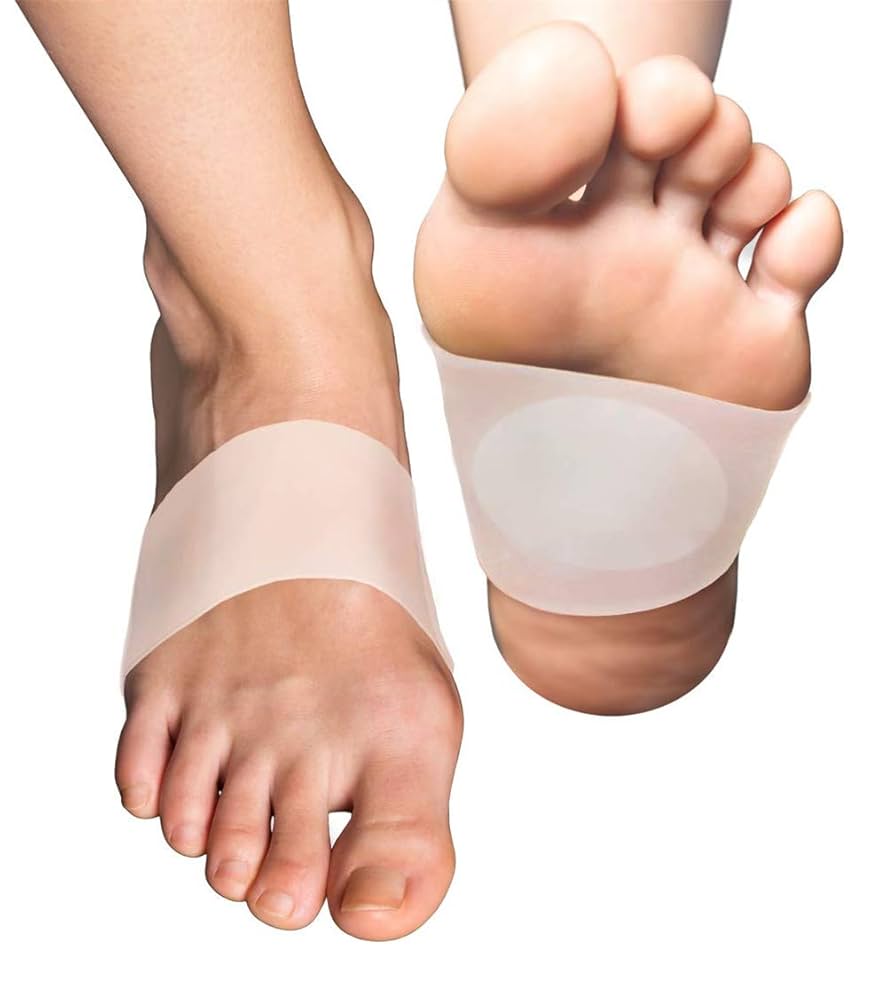
Conclusion: Step Into Comfort and Relief
Silicone arch supports offer a practical, effective way to enhance foot comfort and reduce pain. Whether you’re battling plantar fasciitis, flat feet, or just want to stand and walk longer without discomfort, these inserts provide the cushioning and support your feet crave. With proper selection and use, you can experience lasting relief and improved foot health.
Have you tried silicone arch supports before? What changes did you notice? Share your experiences or questions below — your story might help someone else take their first step toward pain-free feet!
